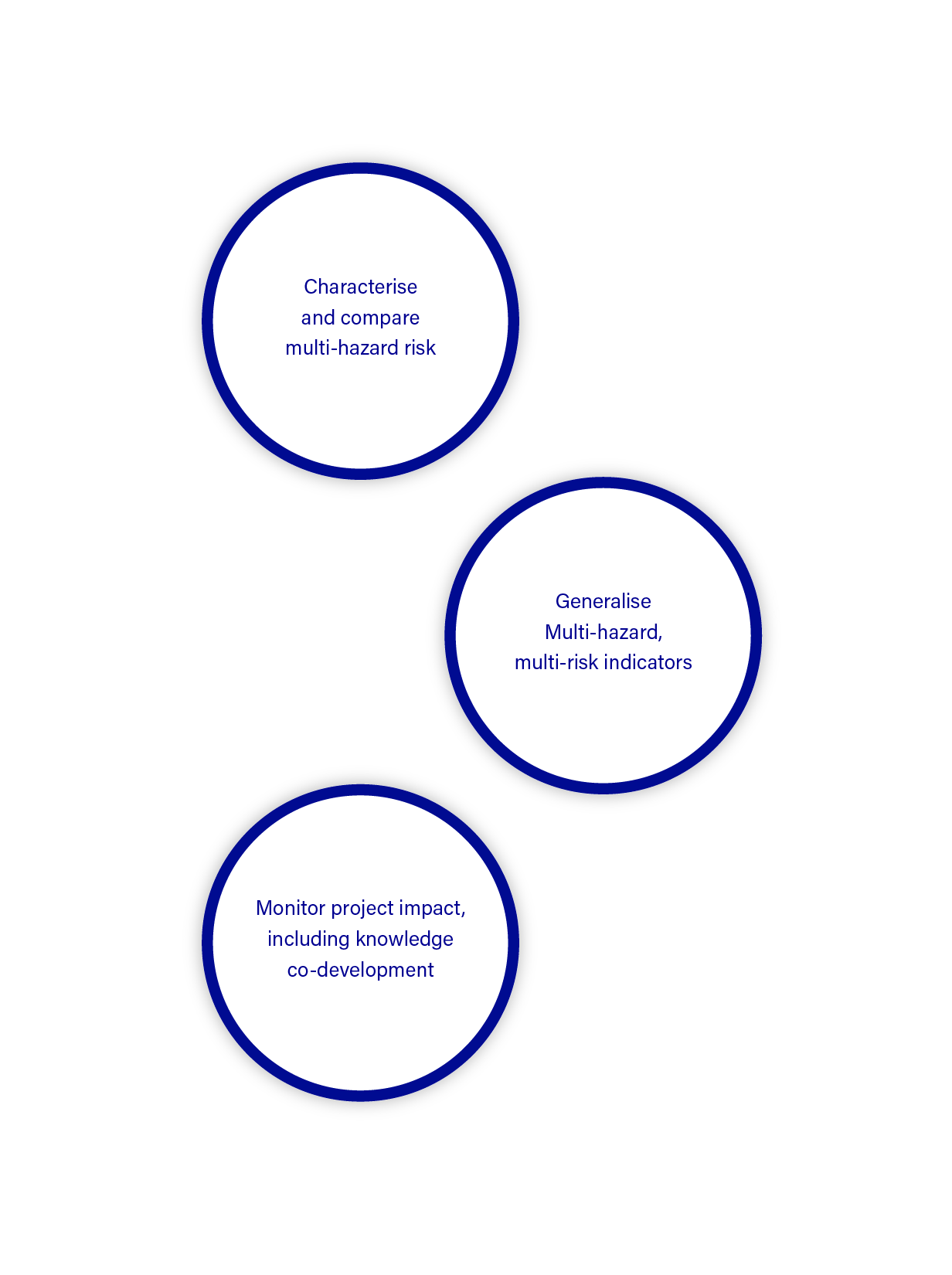One hazard causes another hazard to occur (e.g.,earthquake leading to slope instability).
We build on an extensive body of work, particularly internationally recognised glossaries, to strengthen consensus across the hazard and risk community through a common understanding of multi-hazard, multi-risk terminology and concepts.
We propose draft multi-hazard, multi-risk indicators and a roadmap for testing their further development and application in disaster risk management.
We share key observations and recommendations for the application and evolution of terminology, applying the glossaries in our platform of quantitative and qualitative multi-hazard risk approaches, Disaster Risk Gateway.
Selected outputs
Glossary of 140 terms
- Terms relevant to multi-hazards, multi-risk management
- Terms relevant to interdisciplinary disaster risk research (MYRIAD-EU)
6 key sector descriptions
3 hazard interrelationships and related concepts
Two or more hazards may occur in the same region and/or time period with impacts different than their sum (e.g., storms leading to the occurrence of floods and landslide simultaneously).
One hazard can change the likelihood and/or magnitude of additional hazards in the future (e.g., drought increases the likelihood of wildfires)
4 KEY REFLECTIONS
- 1
Evolution of terminology. Emerging definitions are captured through the Disaster Risk Gateway.
- 2
Terminology and definitions matter. Establishing a common understanding is central to successful interdisciplinary research and practice.
- 3
Indicators could be used to drive progress towards multi-hazard, multi-risk management.
- 4
When is it helpful to include ‘multi-’as a prefix? We question whether part of the paradigm shift is through inherently seeing disaster risk through the lens of multiple, interrelated hazards.
3 groups of multi-hazard risk indicators
Multi-risk characterisation
Multi-risk preparedness
Multi-risk management and governance

